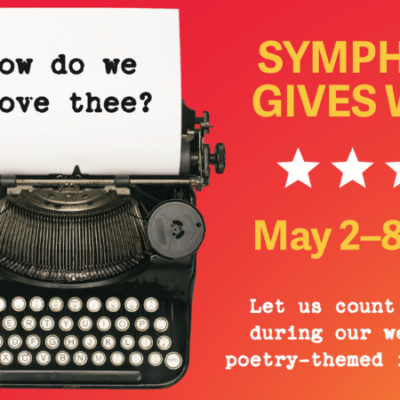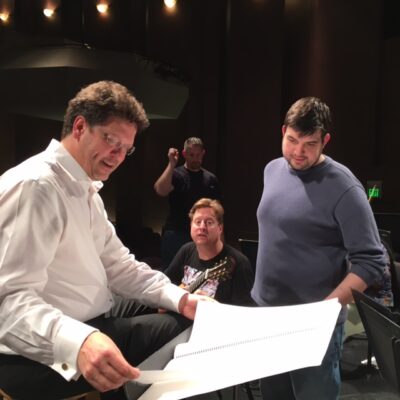Johann Sebastian Bach (1685-1750)
Suite No. 1 in G Major for Unaccompanied Cello BWV 1007, Prelude (ca. 1720) (1994)
Like all musicians, Bach got good gigs and not-so-good gigs. Just about the
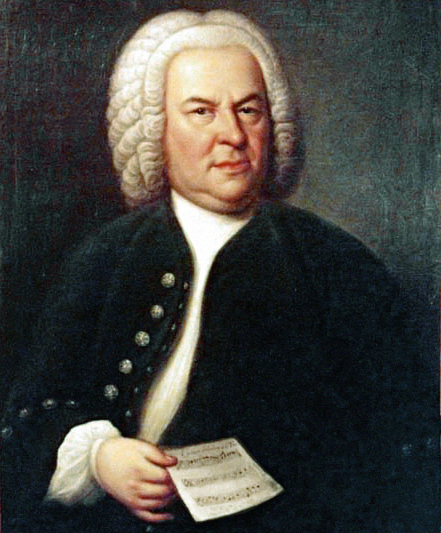
best gig of all was his six-year stint from 1717 to 1723 as kapellmeister to Prince Leopold of Anhalt-Cöthen, a tiny principality in the general vicinity of Weimar. What made the Cöthen gig so cool (at least from posterity’s standpoint) was that the court was Calvinist and therefore eschewed the fancy church music that kept most Lutheran kapellmeisters busy. As a result, Bach focused entirely on producing secular works that have become bedrock repertory for their respective instruments.
There is no more foundational cello repertory than Bach’s six suites. Before Bach, most musicians viewed the cello as suitable for playing the underlying bass line and not much more. But Bach changed all that, by treating the cello as a one-player orchestra. The Prelude from the very first suite in G Major is one of Bach’s most famous compositions, co-opted and borrowed and adapted and arranged for all manner of uses. But it remains at its absolute best in its original formation for the solo cello, a.k.a the four-string orchestra.
Caroline Shaw (b. 1982)
in manus tuas (2009)
He was one of the most remarkable composers of England’s Tudor dynasty: Thomas Tallis, who worked for Henry VIII, Edward VI, Mary I, and 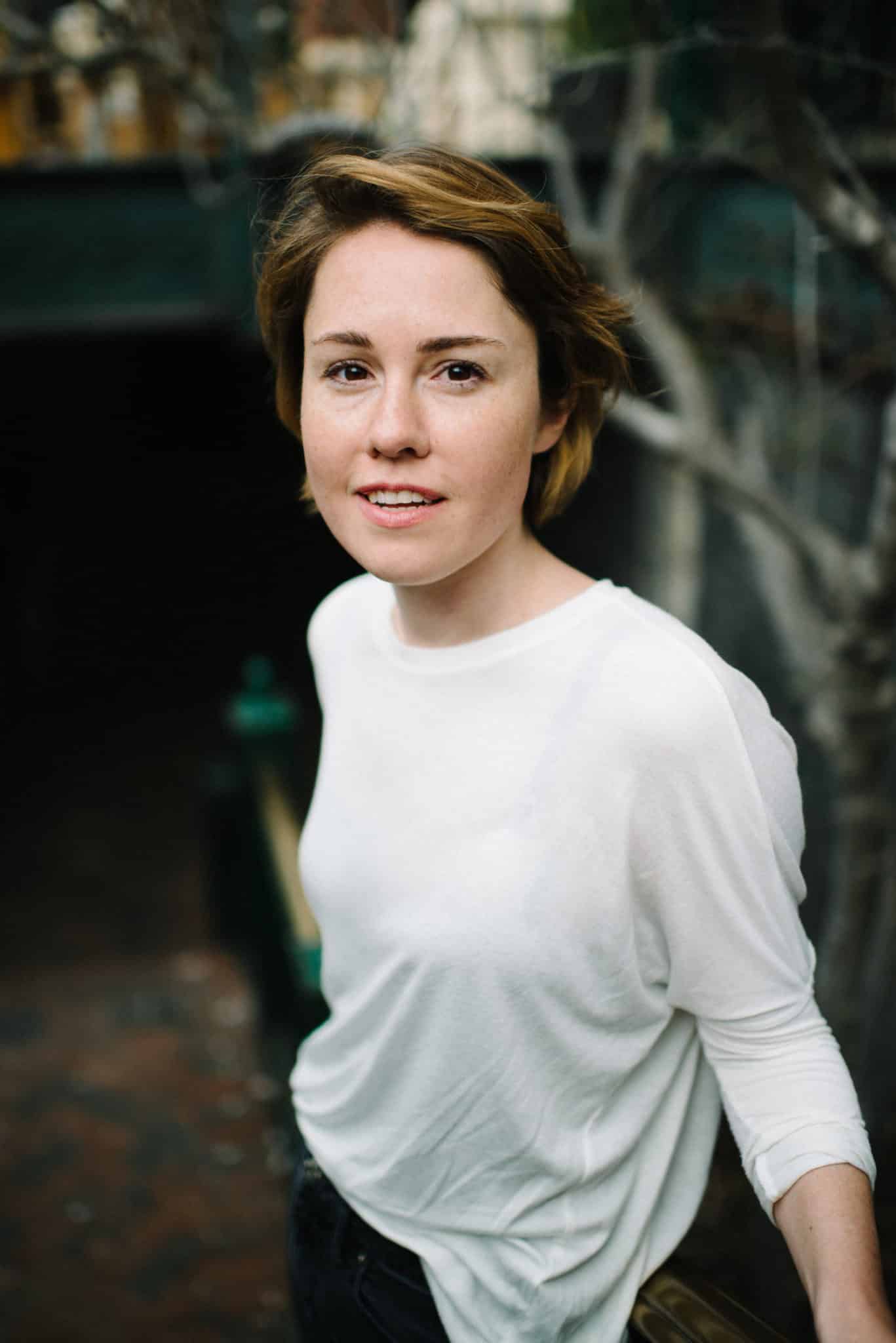 Elizabeth I over the course of his eighty-year lifespan. His sacred choral music has remained integral to English churches to this day; furthermore, it has inspired works by modern composers, most notably Ralph Vaughan Williams’s Fantasia on a Theme by Thomas Tallis for string orchestra.
Elizabeth I over the course of his eighty-year lifespan. His sacred choral music has remained integral to English churches to this day; furthermore, it has inspired works by modern composers, most notably Ralph Vaughan Williams’s Fantasia on a Theme by Thomas Tallis for string orchestra.
Pulitzer Prize winner Caroline Shaw (b. 1982) has based her 2009 In manus tuas on a motet by Tallis. “While there are only a few slices of the piece that reflect exact harmonic changes in Tallis’ setting,” writes Shaw, “the motion (or lack of) is intended to capture the sensation of a single moment of hearing the motet in the particular and remarkable space of Christ Church in New Haven, Connecticut.”
Kryzsztof Penderecki (1933-2020)
Capriccio per Siegfried Palm (1968)
First up, about Siegfried Palm: he was a renowned German cellist who died in 2005 and was renowned for his work in contemporary music. The plethora of modern cello works is partly due to his influence, as he encouraged and/or commissioned new works for the instrument.
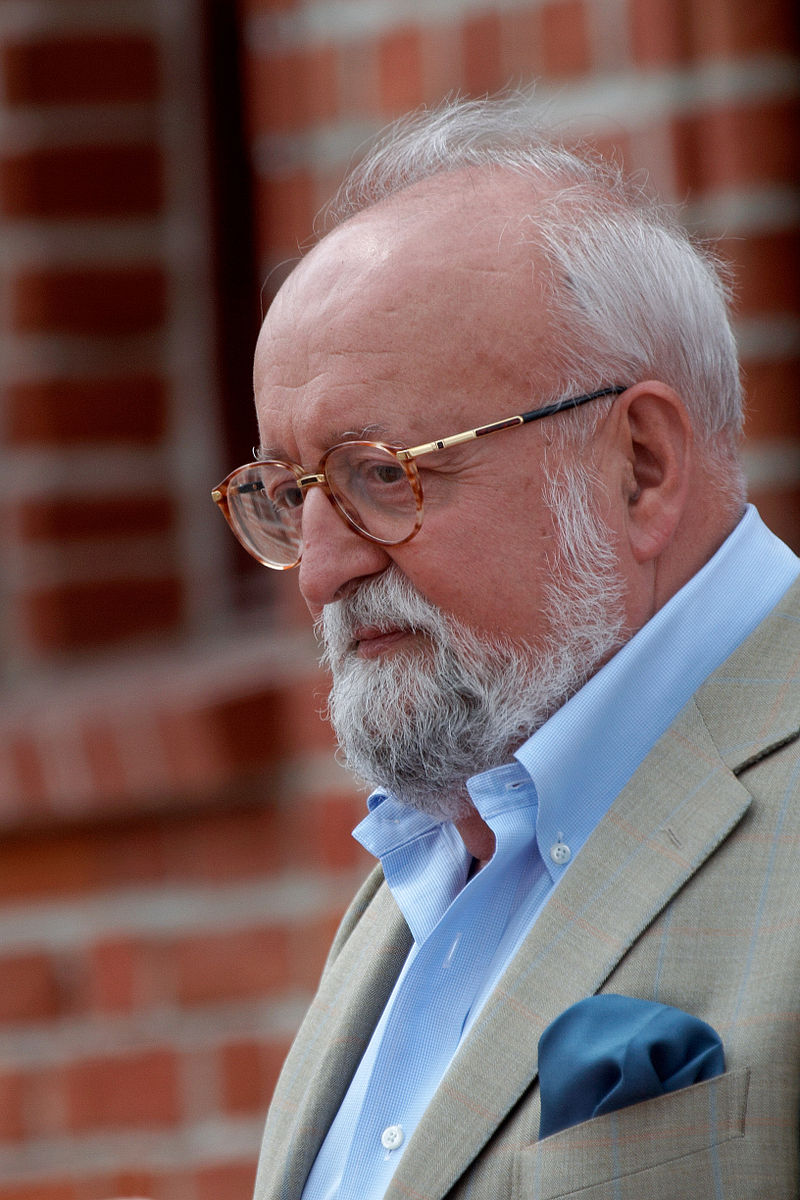 Among the composers who responded to Palm’s inspiration was the renowned Polish composer Kryzsztof Penderecki, who passed away in March of this year. Possibly best known for his large-scale St. Luke Passion, Penderecki was a prolific composer with a catalog that eventually included eight symphonies, five operas, a dozen some-odd concertos, and copious chamber, vocal, and solo works for strings and winds.
Among the composers who responded to Palm’s inspiration was the renowned Polish composer Kryzsztof Penderecki, who passed away in March of this year. Possibly best known for his large-scale St. Luke Passion, Penderecki was a prolific composer with a catalog that eventually included eight symphonies, five operas, a dozen some-odd concertos, and copious chamber, vocal, and solo works for strings and winds.
If Bach turned the solo cello into an 18th-century orchestra, Penderecki reveals a kaleidoscopic modern-day soundscape made possible by the cello’s four strings and one bow (not to mention the player’s ten fingers and two arms), employing an array of innovative techniques to create a wide variety of sonorities.
Allison Loggins-Hull
Stolen (2016)
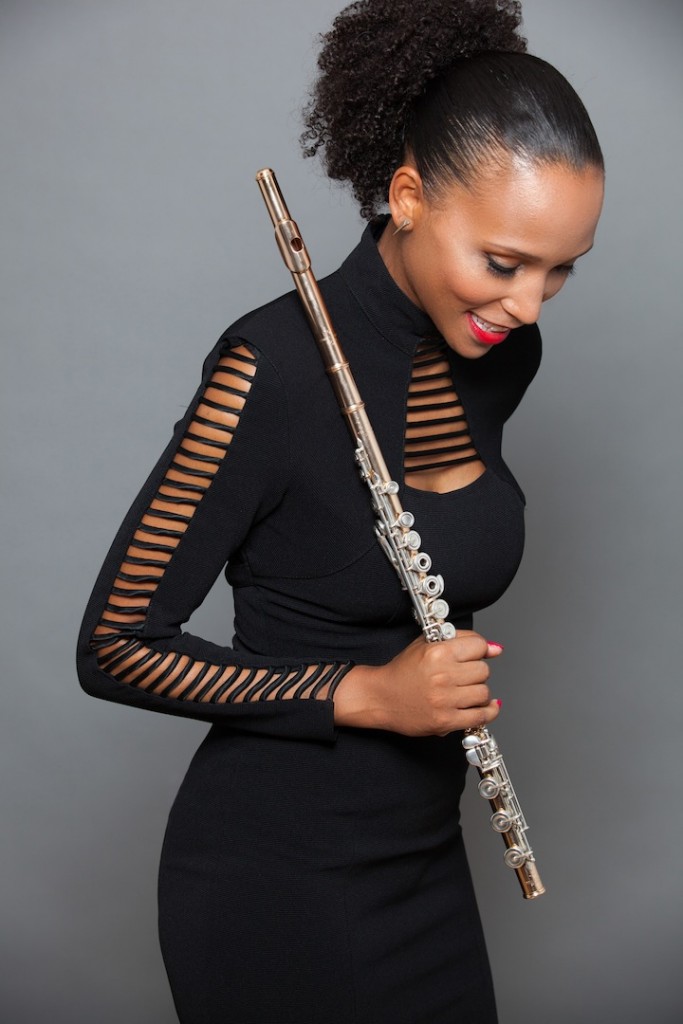 Allison Loggins-Hull’s Stolen, written for cellist Amanda Gookin, “is a sonatine of 3 short movements exploring the journey of a young girl who is sold into marriage,” as Loggins-Hull writes in her eloquent program note. “The first movement represents her stolen youth and the lamentation of saying goodbye to childhood … The second movement explores the anxiety and sense of urgency felt about being forced into womanhood … The third movement is her reluctant acceptance of and submission to an undesired life. She has assumed her new role, but is deeply yearning for the childhood she barely had and to have ownership of herself. Despite this, she must tend to her adult responsibilities as a matter of life or death.”
Allison Loggins-Hull’s Stolen, written for cellist Amanda Gookin, “is a sonatine of 3 short movements exploring the journey of a young girl who is sold into marriage,” as Loggins-Hull writes in her eloquent program note. “The first movement represents her stolen youth and the lamentation of saying goodbye to childhood … The second movement explores the anxiety and sense of urgency felt about being forced into womanhood … The third movement is her reluctant acceptance of and submission to an undesired life. She has assumed her new role, but is deeply yearning for the childhood she barely had and to have ownership of herself. Despite this, she must tend to her adult responsibilities as a matter of life or death.”
Joshua Roman
Duet (2020) (Digital Premiere)
“The centuries-old tradition of the composer-performer has pretty much fallen by the wayside in our increasingly specialized classical music era … the burgeoning dual career of Joshua Roman triumphantly defies that  trend” writes John von Rhein in the Chicago Tribune. He’s right about that grand tradition. There was a time when composers were usually performers, and vice-versa: think Mozart, think Beethoven, think Chopin and Liszt and Sarasate and Ysaÿe and Rachmaninoff and Bartók—and the more you think, the more names pop up. But most modern composers aren’t performers, even if they can get around an instrument well enough, and most modern performers aren’t composers, even if they’re simply oozing with creative potential. Joshua Roman, on the other hand, performs and composes, and much like his illustrious predecessors, he composes music both for himself and for others to perform.
trend” writes John von Rhein in the Chicago Tribune. He’s right about that grand tradition. There was a time when composers were usually performers, and vice-versa: think Mozart, think Beethoven, think Chopin and Liszt and Sarasate and Ysaÿe and Rachmaninoff and Bartók—and the more you think, the more names pop up. But most modern composers aren’t performers, even if they can get around an instrument well enough, and most modern performers aren’t composers, even if they’re simply oozing with creative potential. Joshua Roman, on the other hand, performs and composes, and much like his illustrious predecessors, he composes music both for himself and for others to perform.
Thus Duet, a brand-new composition for solo cello receiving its public premiere on this program. As the name implies, Duet treats the cello as two, not one. Roman tells us that: “Duet was composed during the summer of 2020 with an eventual dance collaboration in mind. The two lines each have an element of grace, but rely on different roles; a longer, more melodious line over a more gestural, modular base. It is melancholic by design, an expression of loneliness and desire for intimacy during a time of collective isolation.”
Mark Summer (b. 1958)
Julie-O for Solo Cello
There are more career paths available to cellists than one might imagine. Los Angeles-born Mark Summer’s career provides a prime example, as he is not only a cellist in the traditional sense—he played in the Winnipeg 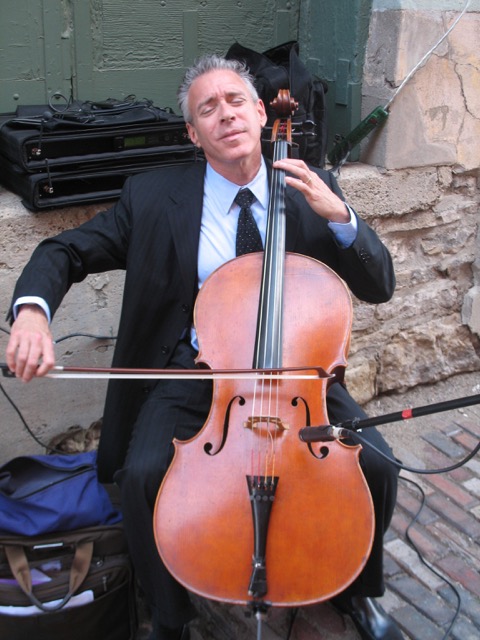 Symphony Orchestra—but works in a wide variety of musical arenas, including with renowned clarinetist and composer Paquito D’Rivera, whose work was featured on the California Symphony’s October 2020 concert. He is co-founder of the Turtle Island Quartet, a highly-regarded string quartet that plays jazz, classical, and rock music.
Symphony Orchestra—but works in a wide variety of musical arenas, including with renowned clarinetist and composer Paquito D’Rivera, whose work was featured on the California Symphony’s October 2020 concert. He is co-founder of the Turtle Island Quartet, a highly-regarded string quartet that plays jazz, classical, and rock music.
Julie-O might sound subtly familiar. That’s because it provided the background for the 2015 advertisement for the Apple Watch. But there’s far more to it than just that: Julie-O is sufficiently innovative as to have engendered a detailed article in “Strings” magazine on approaches to learning the piece.
Samuel Coleridge-Taylor (1875-1912)
Fantasiestücke for String Quartet Op. 5: Prelude, Serenade, and Dance (1896)
Samuel Coleridge-Taylor was raised in England and experienced an education similar to many English composers of the day: studies at the Royal College of Music under Charles Villiers Stanford (who taught just about everybody), professor at the Crystal Palace School of Music, and eventually some highly successful tours of the United States. He was of mixed-race birth, his father a prominent West African from Sierra Leone, his mother an Englishwoman. His death at age thirty-seven resulted in his posthumous legacy being given relatively short shrift compared to contemporaries such as Delius, Holst, Sullivan, and Elgar. His Hiawatha has remained in the repertory, as has a violin concerto, but that’s about it. So let’s all don our explorer togs: Coleridge-Taylor’s catalog is filled with jewels just waiting to be re-discovered.
about everybody), professor at the Crystal Palace School of Music, and eventually some highly successful tours of the United States. He was of mixed-race birth, his father a prominent West African from Sierra Leone, his mother an Englishwoman. His death at age thirty-seven resulted in his posthumous legacy being given relatively short shrift compared to contemporaries such as Delius, Holst, Sullivan, and Elgar. His Hiawatha has remained in the repertory, as has a violin concerto, but that’s about it. So let’s all don our explorer togs: Coleridge-Taylor’s catalog is filled with jewels just waiting to be re-discovered.
His Fantasiestücke (Fantasy Pieces) for string quartet, Opus 5, date from 1896. On this concert we hear movements 1, 2, and 5: Prelude, Serenade, and Dance. This is late-Romantic language at its best: lyrical, harmonically beguiling, and lyrical, with a slightly folk-ish edge.
Jennifer Higdon (b. 1962)
Amazing Grace for string quartet
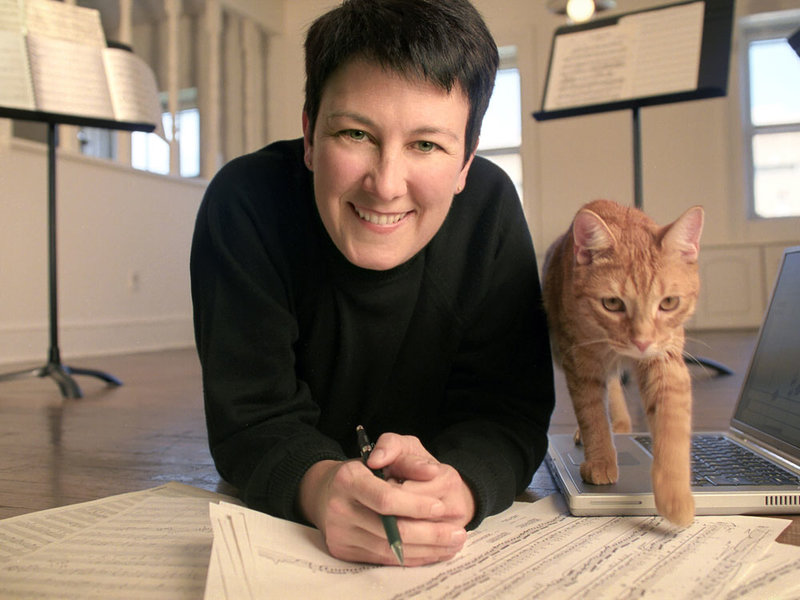 “This arrangement of Amazing Grace began as part of a choral cycle, called Southern Grace, which I composed in 1998,” writes Jennifer Higdon. “Many years later, the Ying String Quartet asked me to arrange it for their group. It has been a pleasure to watch the joy that this piece brings to audiences.”
“This arrangement of Amazing Grace began as part of a choral cycle, called Southern Grace, which I composed in 1998,” writes Jennifer Higdon. “Many years later, the Ying String Quartet asked me to arrange it for their group. It has been a pleasure to watch the joy that this piece brings to audiences.”
Perhaps it’s less ‘arrangement’ and more ‘fantasy’ as the beloved old tune gets a facelift via intertwined melodic lines, surprising harmonic twists, and melodic variations, all of them serving to reveal new facets of a melody that we all know—or at least thought we knew—by heart.
Program Annotator Scott Foglesong is the Chair of Musicianship and Music Theory at the San Francisco Conservatory of Music, and a Contributing Writer and Lecturer for the San Francisco Symphony. He also leads the California Symphony’s ground-breaking music education course for adults Fresh Look: The Symphony Exposed.
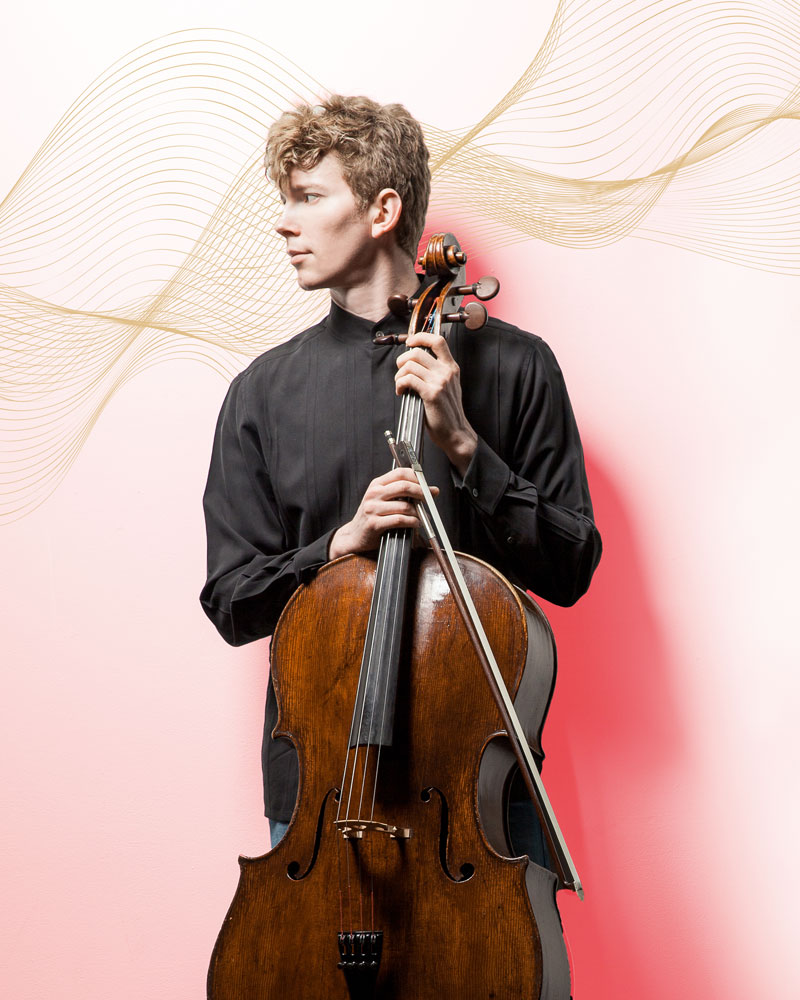 Second Saturdays @ California Symphony continues in November with a program featuring cellist Joshua Roman and California Symphony String Quartet. Join us on Saturday, Nov. 14 for It’s a Cello-bration!, FREE to watch online from the comfort of your couch. Learn more here.
Second Saturdays @ California Symphony continues in November with a program featuring cellist Joshua Roman and California Symphony String Quartet. Join us on Saturday, Nov. 14 for It’s a Cello-bration!, FREE to watch online from the comfort of your couch. Learn more here.


